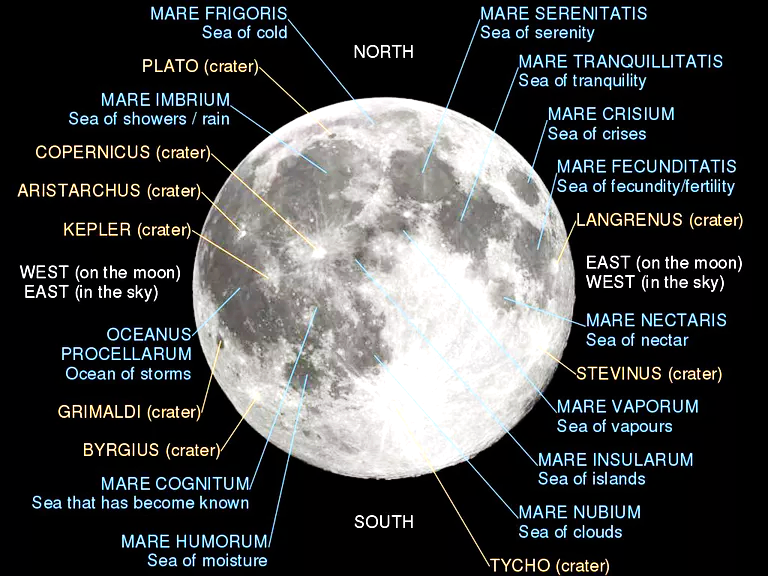Science & Technology
New Lunar Crater
- 11 Mar 2022
- 5 min read
For Prelims: Project Pluto, Lunar Crater, Earth craters, Mitra Crater on Moon.
For Mains: Space Junk, Space Technology.
Why in News?
Recently, a leftover piece of a spacecraft flying (of Chang'e 5-T1 – a lunar mission of China) through space reportedly hit the surface of the moon creating a new crater that may be around 65 feet wide.
- This is the first recorded unintentional case of space junk hitting the moon.
- The speed, trajectory, and time of impact were calculated using earth-based telescope observations called Project Pluto.
- Project Pluto is a blog that tracks near-earth objects, which was created by American astronomer Bill Gray. He is also the creator of a popular astronomy software called Guide.
What is Space Junk?
- About: Space debris, also called space junk, artificial material that is orbiting Earth but is no longer functional.
- This material can be as large as a discarded rocket stage or as small as a microscopic chip of paint.
- Location: Much of the debris is in low Earth orbit, within 2,000 km of Earth’s surface, though some debris can be found in geostationary orbit 35,786 km above the Equator.
- Issue (Kessler Syndrome) : The free floating space debris is a potential hazard for operational satellites and colliding with them can leave the satellites dysfunctional.
- This is referred to as Kessler Syndrome, named after NASA scientist Donald Kessler in 1978.
- It says if there is too much space junk in orbit, it could result in a chain reaction where more and more objects will collide and create new space junk in the process, to the point where Earth's orbit becomes unusable – a Domino Effect.
- With countries launching more and more satellites, each one of them being a strategic or commercial asset, avoiding collisions could become a challenge in the future.
- Solution: Clearspace-1 (of European Space Agency), which is scheduled to launch in 2025, will be the first space mission to eliminate debris from orbit.
What are Lunar Craters?
- Lunar Craters are bowl-shaped landforms created by Volcanism and Cratering, about 4.5 billion years ago, shortly after Earth was formed.
- There are hundreds of thousands of moon craters ranging from less than a mile across to giant basins.
- The largest crater on the Moon is called South Pole-Aitken Basin.
- Further, throughout its existence, the Moon has been bombarded by comets and asteroid chunks, and those created the many impact craters we see today.
- Moon’s lack of water, atmosphere, and tectonic plates, there is little erosion, and craters are found that exceed two billion years in age.
- Mitra Crater on Moon is named after Indian radio physicist Sisir Kumar Mitra.
What is the Difference between Craters on the Moon and Earth?
- Both the earth and the moon have been hit by multiple objects like asteroids throughout their existence, but craters on the moon are of a more permanent nature than those on earth.
- This is because of processes like erosion, tectonics, and volcanism.
- According to NASA, these three processes keep the surface of the earth crater-free and remove traces of collisions that have happened in the past.
- Currently, the earth has less than 200 known craters while the moon has thousands.
- An absence of atmosphere means there is no wind system and no weather on the moon, and hence no cause for erosion of existing craters.
- The absence of tectonics prevents the moon’s surface from forming new rocks or causing a shift in the existing surface patterns, unlike that on earth.
- Lastly, the absence of volcanism (in recent history) makes it impossible for craters to be covered.
PYQ
Selene-1, the lunar orbiter mission belongs to which one of the following? (2008)
(a) China
(b) European Union
(c) Japan
(d) USA
Ans: (c)





